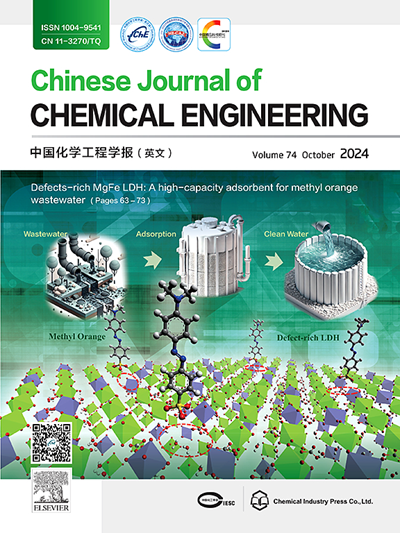Enrichment and purification of nervonic acid from Acer truncatum seed oil by combining vacuum distillation and low-temperature crystallization: Experiments and process modeling
IF 3.7
3区 工程技术
Q2 ENGINEERING, CHEMICAL
引用次数: 0
Abstract
Nervonic acid (NA) is a long-chain monounsaturated fatty acid with significant potential for neural fiber repair. In this study, a mixed fatty acid methyl ester was synthesized as the raw material through saponification of Acer truncatum Bunge seed oil. Based on the differences in boiling points and relative volatilities of various components, a four-stage vacuum batch distillation process was employed to enrich the nervonic acid methyl ester (NAME). The effect of distillation process parameters on enrichment efficiency was investigated, including distillation temperature, operating pressure, and reflux ratio. The purity of NAME achieved as 91.20% under optimal conditions and the corresponding yield was 48.91%. To further increase the purity, a low-temperature crystallization process was adopted and a final purity of NAME was obtained as 97.56%. Simulation of the above four-stage batch distillation was conducted using Aspen Plus software, and a continuous distillation processes was further simulated to establish a theoretical basis for future industrial-scale production. The results of experiments and simulation demonstrate that the integrated process of vacuum distillation and low-temperature crystallization exhibits remarkable separation performances, providing robust guidance for the production of high-purity NA.

真空蒸馏与低温结晶相结合富集纯化槭仁油神经酸:实验与工艺模拟
神经酸(NA)是一种长链单不饱和脂肪酸,具有修复神经纤维的重要潜力。以槭仁油皂化为原料,合成了一种混合脂肪酸甲酯。根据不同组分沸点和相对挥发性的差异,采用四段真空间歇精馏工艺富集神经酸甲酯(NAME)。考察了精馏温度、操作压力、回流比等工艺参数对富集效率的影响。在最佳条件下,NAME的纯度为91.20%,收率为48.91%。为了进一步提高纯度,采用低温结晶工艺,最终得到的NAME纯度为97.56%。利用Aspen Plus软件对上述四段间歇精馏进行了模拟,并对连续精馏过程进行了进一步模拟,为未来工业规模生产奠定理论基础。实验和仿真结果表明,真空蒸馏与低温结晶相结合的工艺具有良好的分离性能,为高纯度NA的生产提供了有力的指导。
本文章由计算机程序翻译,如有差异,请以英文原文为准。
求助全文
约1分钟内获得全文
求助全文
来源期刊

Chinese Journal of Chemical Engineering
工程技术-工程:化工
CiteScore
6.60
自引率
5.30%
发文量
4309
审稿时长
31 days
期刊介绍:
The Chinese Journal of Chemical Engineering (Monthly, started in 1982) is the official journal of the Chemical Industry and Engineering Society of China and published by the Chemical Industry Press Co. Ltd. The aim of the journal is to develop the international exchange of scientific and technical information in the field of chemical engineering. It publishes original research papers that cover the major advancements and achievements in chemical engineering in China as well as some articles from overseas contributors.
The topics of journal include chemical engineering, chemical technology, biochemical engineering, energy and environmental engineering and other relevant fields. Papers are published on the basis of their relevance to theoretical research, practical application or potential uses in the industry as Research Papers, Communications, Reviews and Perspectives. Prominent domestic and overseas chemical experts and scholars have been invited to form an International Advisory Board and the Editorial Committee. It enjoys recognition among Chinese academia and industry as a reliable source of information of what is going on in chemical engineering research, both domestic and abroad.
 求助内容:
求助内容: 应助结果提醒方式:
应助结果提醒方式:


